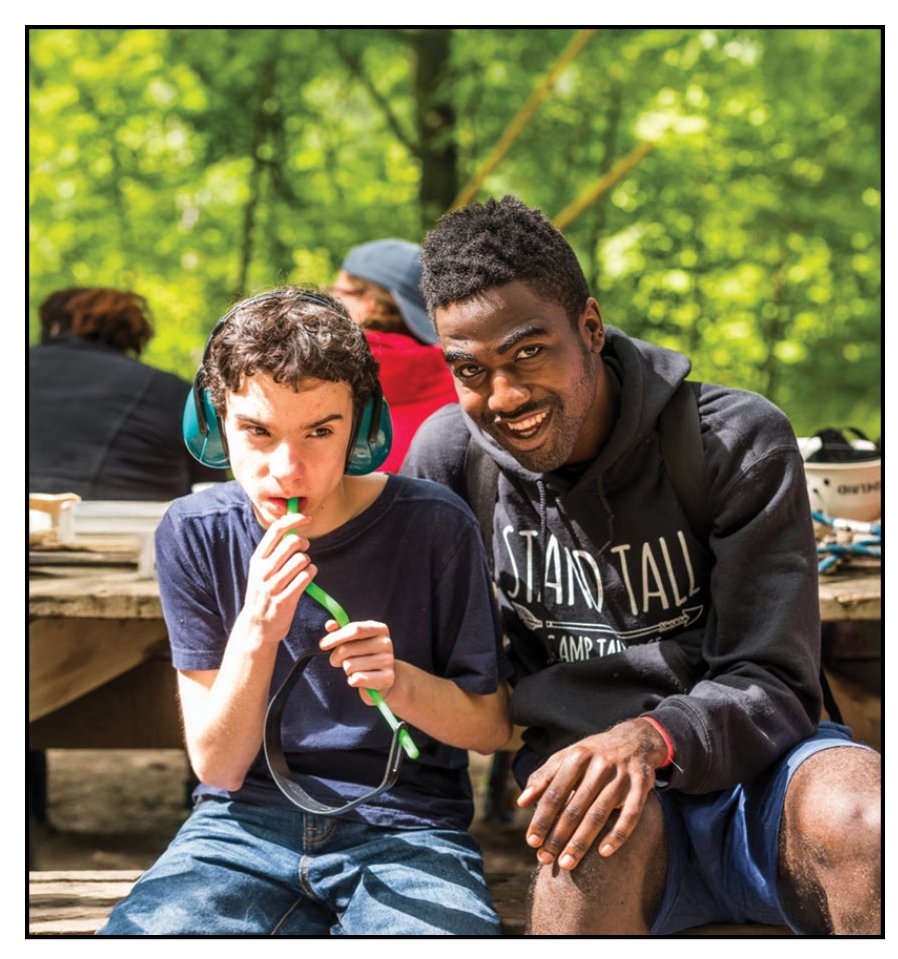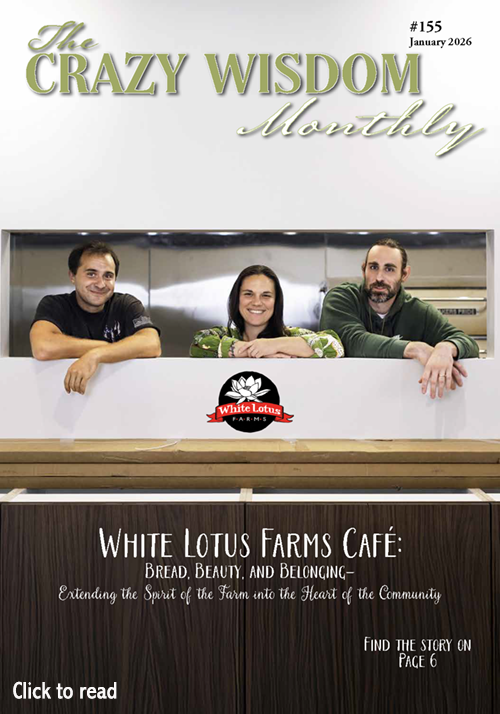By Christine MacIntyre
Cooking isn’t just about whipping up tasty treats (although that’s definitely a big part of the fun). Empowering and nurturing children’s culinary skills extends far beyond the kitchen. It’s a fantastic adventure where kids explore, create, and learn skills that will stick with them for life. Think of it as a mix of delicious experiments and add a sprinkle of essential life lessons on top. From crafting scrumptious snacks to understanding the fuel that keeps us going, kids learn the importance of nutrition, gain confidence, and feel accomplished. In today’s fast-paced world, introducing kids to the wonders of cooking is an invaluable gift, offering them a foundation for a lifetime of healthy eating habits and a deeper appreciation for the culinary arts.
My 14-year-old and 10-year-old have their own unique approaches to the kitchen. One delights in baking, while the other finds joy in crafting new flavors for main courses, experimenting with various seasonings and sauces to create delectable dishes. I’ve made it a point to involve my kids in the kitchen, whether preparing our evening meals or making unique desserts for celebrations. I encourage them to explore and express their creativity by experimenting with their culinary ideas rather than rigidly following recipes.
But cooking can sometimes feel like uncharted territory—especially when engaging kids beyond the fundamental kitchen tasks. I remind myself that, sometimes, it’s the simple things that spark interest and creativity in the kitchen.
While there are ways to make it fun and educational without being a seasoned chef yourself, I find it exciting that opportunities exist for kids looking to dive deeper into the culinary world. I’ve discovered several fantastic avenues for kids to engage in and explore cooking in a safe and enjoyable environment while learning directly from seasoned professionals. The local options available are fantastic!
Sprouting Chefs
In the heart of bustling Ann Arbor, Sprouting Chefs quietly transforms how children relate to food. Founded by the passionate and visionary Lilian Anderson, this local gem is more than a cooking school; it’s a culinary haven where young minds ignite, palates awaken, and a lifelong love affair with the art of cooking blooms.
In a world where fast food and convenience often overshadow the importance of wholesome, home-cooked meals, Anderson’s Sprouting Chefs is a beacon of hope. It’s where the sounds, textures, and smells of cooking converge with the excitement of discovering new flavors creating an unforgettable experience for kids.
The story is as inspiring as its mission. Anderson, a culinary enthusiast, realized the need for a place where children could develop a genuine connection with food. She saw the growing disconnect between young generations and the culinary traditions that have enriched our lives for centuries. Determined to make a change, she embarked on a journey to create an innovative learning environment that would not only teach kids how to cook but also inspire them to become confident, creative, and conscious chefs.
Eight years ago, she kicked off at home with fun, hands-on cooking classes for kids. After a booming start, she secured a kitchen space in a local church to make it official. The weekend classes, tailored for ages 8 and up, or 10 and up, run year-round, spiced with occasional sessions specifically for teens. Additionally, she runs a six-week after-school program in the fall. Without advertising, her classes always fill up, attracting students from far and wide. In the fall, she recruits help from students attending the University of Michigan’s public health program. During the two-and-a-half-hour sessions, kids cook up a storm, ending with a shared meal. They cook in big batches, ensuring plenty to take home and share with family.
The classes come in diverse themes, from baking extravaganzas to crafting full meals infused with various ethnic cuisines, spotlighting ingredients like potatoes, eggs, and bread in creative ways. Drawing from her own childhood kitchen experiences, such as baking holiday cookies, Anderson curates each class starting with a captivating theme and then handpicks the dishes the kids will prepare. “I try to use recipes that I think kids will find appealing. But I’ll even include traditional meals that maybe kids have tried at a restaurant or at home.” She emphasizes that the crucial aspect is to integrate and make use of a range of ingredients. For instance, she might use various herbs in chicken fingers’ breading or opt for pretzels to add a crunchy texture. “I spend a lot of time testing recipes, often borrowing a bit from several and tweaking them,” she explained. She meticulously considers if the recipes fit into the class duration, tackling logistics to ensure a seamless experience. Her rule of thumb? “99% of the time, three recipes are a good fit.”
Age distinctions guide the curriculum, with children aged ten and above learning to use chef’s knives, while younger kids focus on baking classes involving paring knives. Anderson emphasized, “I believe that kids aged ten and above are capable of handling tasks similar to adults. They learn essential safety skills and typically demonstrate a longer attention span than younger kids.” This approach is a pivotal factor contributing to the appeal of her classes, where she imparts knowledge at an elevated level, engaging kids in a setting of mutual respect.
Anderson expressed her enthusiasm for teaching kids how to cook. “Kids are creative; they think outside the box. Adults are often set in their ways, but kids explore new ways of doing, and the kids shape their own creations.” Furthermore, she teaches a pie-making class emphasizing that kids can decorate the top crust to their liking.
While Anderson is a registered dietician, she rarely mentions nutrition in class. “They’re there for hands-on cooking, and, to me, cooking is right off the bat ‘good nutrition’ if you’re cooking from scratch.” Without lecturing, she imparts her knowledge of good nutrition by encouraging kids to eat home-cooked meals. “I have fun cooking, and it’s provided me with a healthy lifestyle, so I want to pass on that skill,” she said. She had no classroom teaching experience before her cooking classes but relied on her passion and experience in culinary food service to guide her.
Over the years, Anderson has noticed a decline in kids’ cooking skills, often due to their parents’ busy schedules or lack of culinary experience. Nevertheless, kids show a keen interest in learning. According to her, the advantages are extensive. It’s not just about mastering cooking; it’s also about reaping social rewards. “Cooking and socializing bring immense joy. It’s fun to watch during class,” she remarked. While some children attend with companions, many arrive solo. “At the start, the class tends to be quiet and reserved for the first half-hour. By grouping them in threes, they are encouraged to collaborate and communicate,” she explained. As time progresses, she notes a gradual increase in lively discussions. “By the end of the session, they’re chatting like they’re all buddies.”
Moreover, cooking classes play a role in assisting kids who are often picky about their food or hesitant to explore new flavors. “When they actively participate and experience the various smells and textures, they become more open to trying the food,” Anderson said. Although she has seen a few kids initially grumble about the menu, she highlights how observing other children eating and relishing the creations naturally encourages hesitant kids to try them. “It compels them to be more comfortable and open to try new things.”
Many kids return to Anderson’s classes. She says she’s had kids take multiple classes over the years, and now their younger siblings join in. The demand is there, but options for kids’ cooking classes are few and far between. “I’ve given talks, encouraging others to venture into kids’ cooking classes.” For kids who want to learn but don’t have access to nearby classes, kids’ cookbooks can help, albeit Anderson said that they can often feel too basic for kids with a working knowledge of cooking skills.
For more information about classes at Sprouting Chefs visit the website sproutingchefs.org or give them at call at (734) 474-1006. Sprouting Chefs is located at 1532 Warwick Court in Ann Arbor.
BAKE! at Zingerman’s Bakehouse
Zingerman’s Bakehouse is an artisanal bakery with a baking school in Ann Arbor. It was founded 30 years ago as a simple bread bakery with a single customer, Zingerman’s Delicatessen. Today, they make bread, pastries, cakes, lunch items, and more. BAKE!, nestled between Zingerman’s Bakehouse and Zingerman’s Creamery, offers different bread, pastry, and cake hands-on baking and cooking classes in both the teaching kitchens and online.
BAKE! offers a variety of adult classes, but since they love to encourage cooking and baking from a young age, they offer a variety of classes designed for kids throughout the year as well. Multi-day camps for kids and teens occur in the summertime, and virtual kids’ classes offer an excellent opportunity to learn from professional instructors from the comforts of home. Private classes are another perfect option for cooking and baking for kids.
Summer camp sessions are four days long, and they run all summer long. There are two sessions—one for ages 10 to12 and another for ages 13 to15. During camp, older kids make wheat bread, banana bread, and cream puffs, and younger kids make delicious recipes such as Bavarian pretzel twists, Linzer cookies, and an iced layer cake. When coming up with recipe ideas for class, BAKE! instructors consider age and what certain age groups might be excited about making. Zingerman’s Bakehouse Marketing Assistant Manager and Photographer Corynn Coscia said, “The older kids love the cake decorating so they can make occasion cakes for friends and families.” They also try incorporating new foods kids may have never tried, such as Cornish pastries and knishes.
BAKE! kids’ classes are more than just baking; they’re interdisciplinary activities in which instruction can often touch on subjects like math, chemistry, physics, world history, geography, and horticulture. Their knowledgeable instructors make connections between these concepts and the recipes they teach. Kids can then enjoy creating in the context of learning. Kids learn to make delicious recipes such as biscuits, pizza, pasta, cinnamon rolls, brownies, cupcakes, and decorated cookies.
According to Coscia, kids’ cooking and baking classes are beneficial beyond learning recipes. Beyond touching on subjects outside the kitchen, she said, “It’s just plain fun to teach kids. The smiles on their faces when they see their finished products let us know that they had fun, too!” BAKE! ‘s passionate instructors eagerly share positive experiences and time-honored traditions with younger generations. “Many of us began our love of baking when we were very young—the sense of discovery and feeling of accomplishment remain vivid in our minds.”
For more information about learning at Zingerman’s visit bakewithzing.com or call (734) 761-2190. Zingerman’s BAKE! is located at 3723 Plaza Drive, Ann Arbor.
Sur La Table Kids’ Cooking Classes
Young chefs aged seven to 11 will enjoy fun-filled days of cooking, learning, and laughter during classes at Sur La Table. Winter series classes include a four or five-day baking adventure that gives kids hands-on baking experience from mixing batter and kneading bread dough to decorating cookies. Each session explores essential baking techniques, food prep skills, and kitchen safety and gives them the confidence to recreate the experience at home. These classes are small, encouraging active participation and plenty of guidance from talented chefs and teachers.
Sur La Table also offers classes for ages 14 and up, albeit a paying adult must accompany any participants ages 17 and under. These classes are perfect for older teens who want to learn how to make dinner favorites such as homemade ravioli or dumplings, as well as diverse dishes taught in themed classes such as Chinese Takeout, Dinner in Portugal, or Cast Iron Comfort Cooking.
Learn more about Sur La Table Kids’ cooking classes by visiting surlatable.com/cooking-classes/kids-teens-cooking-series or call (734) 531-0300. Sur La Table is located at 3050 Washtenaw Avenue Suite 109, in Ann Arbor.
How Do You Know When You Can Start Cooking With Your Kids?
The age at which your child begins cooking depends on their developmental stage and interest in the kitchen. Kids can start at any time! Ensuring they can manage basic cooking tasks is essential, with your assistance if needed. Activities like pouring, stirring, and whisking ingredients are enjoyable for children and serve as an excellent starting point. As their motor skills improve, they can gradually progress to more challenging tasks.
In addition to basic tasks, consider introducing your child to simple recipes and involving them in the preparation process. As they become more comfortable and proficient, encourage them to take on more responsibilities in the kitchen, such as measuring ingredients, mixing, and eventually following recipes with minimal supervision. This gradual progression will boost their confidence and independence while developing essential cooking skills. Remember to emphasize kitchen safety and the importance of cleanliness throughout their cooking journey. Making cooking a fun and engaging experience will foster a lifelong love for creating delicious dishes!
Try This Kid-Friendly Recipe!
It was a delightful and memorable afternoon when my kids and I decided to create homemade ice cream using just three simple ingredients. What made it even more special was watching my 10-year-old take the reins and do most of the work himself. With enthusiasm and a dash of curiosity, he carefully measured and mixed the cream, condensed milk, and vanilla extract, his eyes gleaming with excitement as he poured the mixture into a giant bowl. The whirring motion of the hand mixer mirrored our anticipation as we eagerly awaited the transformation of our ingredients into a delicious-looking mound of creamy goodness, which we then put in the freezer overnight. It was a proud moment watching him take charge, showcasing his burgeoning culinary skills while creating a sweet treat that brought us together in the joy of making something from scratch.
This recipe is wonderfully simple and cost-effective calling for basic ingredients and minimal supplies. After researching various options online, we found this particular recipe to be our favorite. What I love most is its versatility, allowing kids to explore different flavors and mix-ins. Whether it’s adding chocolate chips, crushed cookies, fruit, or nuts, this recipe encourages experimentation. It’s an excellent way for kids of all ages to have fun while exploring various tastes and textures in their homemade ice cream!
Ingredients:
• 2 cups heavy cream
• 14 ounces sweetened condensed milk
• 1 tablespoon vanilla extract
Instructions:
1. Chill: Ensure the heavy cream is well chilled before you begin. The colder the cream, the better the results. You can also refrigerate the mixing bowl and beaters for better whipping.
2. Whisk: In a large mixing bowl, pour the heavy cream. Using a hand mixer or stand mixer, whip the cream until stiff peaks form. This step is crucial for achieving the ice cream’s creamy texture.
3. Combine: In a separate bowl, pour the sweetened condensed milk. Add the vanilla extract to the condensed milk and gently stir to combine.
4. Blend: Now, gently fold the whipped cream into the condensed milk and vanilla mixture. Use a spatula to combine the two mixtures, being careful not to overmix to retain the fluffy texture.
5. Freeze: Transfer the combined mixture into a freezer-safe container or a loaf pan. Smooth out the top and cover it with a lid or plastic wrap. Place the container in the freezer for at least six hours or overnight for best results.
6. Serve: Once frozen, scoop the delicious homemade ice cream into bowls or cones and enjoy the creamy, flavorful treat!
Mystery Ingredient Kid Cook-Off
Cooking challenges are a creative and fun way to get kids engaged in learning, creativity, planning, and, of course, cooking. The mystery ingredient challenge could be done solo, or they could ask their siblings or friends to join in.
Start by selecting a few mystery ingredients that are kid-friendly and versatile, such as apples, cheese, pasta, or a specific vegetable. These ingredients should be simple enough for kids to work with but also open to interpretation.
Present the mystery ingredients to the chef(s) and set a time limit for them to create a dish using those ingredients as the primary focus. Once the time starts, they plan and execute their recipes, utilizing the mystery ingredients and any additional items available.
Parents, siblings, or friends taste their completed dish. Is it creative, delicious, innovative? Categories for winners could include “Best Presentation,” “Most Creative Use of Ingredients,” or “Best Taste.” Prizes or certificates can be fun, although bragging rights or compliments work well too!
This challenge not only encourages kids to think creatively and experiment with new flavors but also promotes teamwork, problem-solving, and culinary skills. It’s an entertaining and educational way for kids to have fun in the kitchen.
Kids Cookbook Recommendations
Dynamite Kids Cooking School by Dana Bowen and Sara Kate Gillingham
This is an engaging and educational cookbook designed to ignite young culinary enthusiasts’ passion for cooking. Filled with vibrant recipes and easy-to-follow instructions, this cookbook encourages kids to explore and create delicious dishes while learning essential cooking skills. From basic recipes to more complex culinary delights, this book is a fun and practical guide for children eager to experiment and develop their talents in the kitchen.
Named one of the best cookbooks of the year by The New York Times, this pick features recipes such as simple quesadillas (filled with sauteed greens), hearty lasagna, classic layer cake, and summery mac and cheese made with light ricotta. Each recipe features a tip or trick kids will easily retain for future use.
Kid Chef Vegan: The Foodie Kid’s Vegan Cookbook by Barb Musick
The “Kid Chef Vegan” cookbook is a fantastic gateway to the world of plant-based cooking for kids. Packed with colorful, flavorful, and healthy recipes, this cookbook empowers young chefs to create delicious and nutritious meals that are entirely plant-based. With easy-to-follow instructions and engaging content, this book introduces a variety of delightful recipes, from tasty snacks to hearty meals, inspiring kids to explore the exciting and diverse world of vegan cuisine. It’s the perfect tool for children keen on embracing an animal-free, environmentally conscious, and tasty way of cooking.
Kitchen Tools: The Complete Cookbook for Young Scientists by America’s Test Kitchen Kids
This pick is an innovative and interactive culinary journey tailored for curious young minds. Bursting with exciting experiments and recipes, this cookbook combines the joy of cooking with fascinating scientific exploration. Each recipe is a hands-on experiment, allowing kids to learn about the science behind the food they prepare. Packed with simple yet intriguing culinary projects, this cookbook fosters a deeper understanding of chemistry, physics, and biology through the lens of cooking. It’s an ideal resource for curious kids eager to blend their passion for food with the wonders of science.
Good Housekeeping’s 1,2,3 Cook! My First Cookbook
This is a user-friendly introduction to the world of cooking for young chefs. Created by the renowned Good Housekeeping brand, this cookbook features simple and tasty recipes perfect for children starting their culinary journey. Packed with colorful illustrations and step-by-step instructions, it makes cooking fun and accessible for kids. From easy snacks to yummy meals, this cookbook encourages kids to explore their creativity in the kitchen, making it an excellent first step for aspiring young cooks.











































































































































































































The moon has a way of catching a child’s eye. It lingers above treetops, follows the car home, disappears for a few nights, then returns—quiet, steady, familiar. For parents, it’s a reminder to pause, to notice, and to reconnect with something simple yet deeply grounding: the rhythm of nature itself.